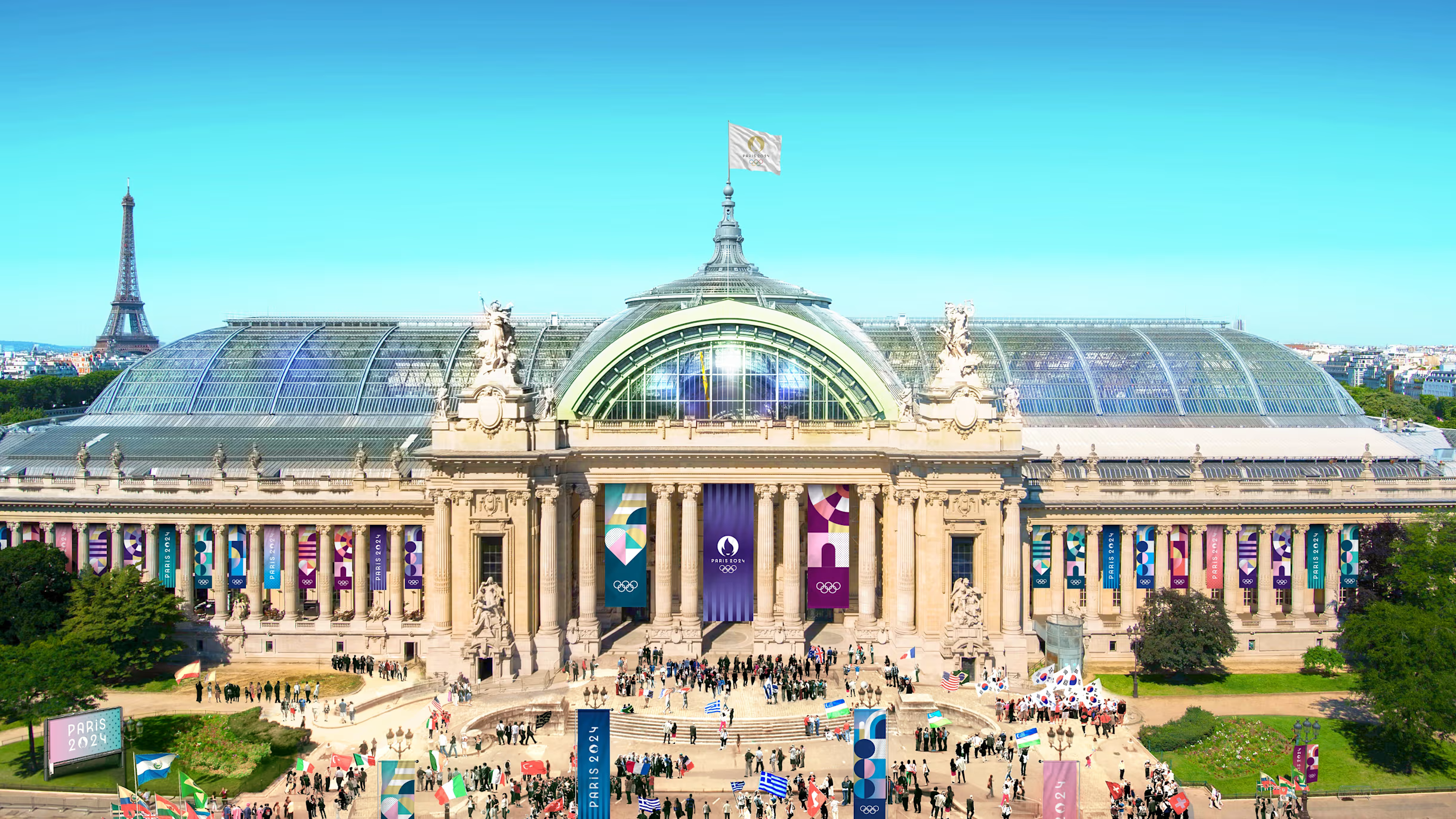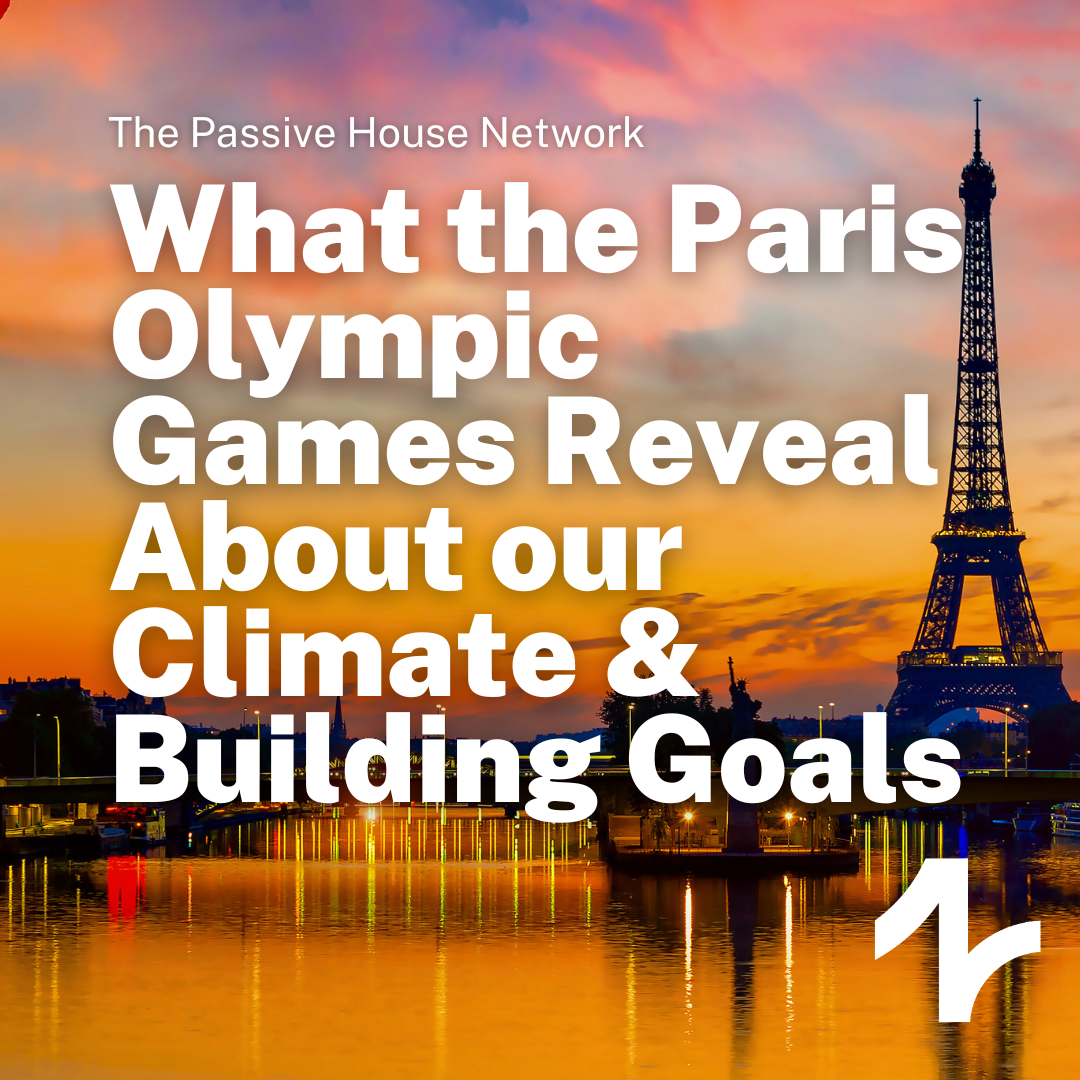What the Paris Olympic Games Reveal about our Climate & Building Goals
The 2024 Paris Olympic Games opened with a historic outdoor ceremony along the Seine. It was the first modern Opening to be held outside. Previous ceremonies have been held in stunning auditoriums like Beijing’s Bird’s Nest with its interwoven support beams or the London Olympic Stadium with its long cantilevered roof. With the Olympic Games’ long history of stunning structures, Paris’ departure from tradition is notable, but not entirely unpredictable.
In part, Paris is answering to the long-standing critiques of waste that are often levied against host nations after the Games. It’s not unusual for a country to spend millions–if not billions–of dollars building facilities–pools, ski jumps, bobsled tracks, dorms for the athletes, in addition to the main stadiums–only for those facilities to fall into disrepair once the Games close and the athletes are sent home. The result is a tragic waste of building materials, labor, and public space. With their outdoor ceremonies, Paris is avoiding the costs and wastes that might otherwise be inevitable, instead repurposing other buildings and spaces across the city to accommodate the various sporting events where possible. (The Grand Palais, holding Fencing and Taekwondo events, is a crowd pleasing favorite).

The Grand Palais, Olympics.com
It’s no surprise that Paris is taking a more sustainable approach to the Games. After all, it’s the same city that lends its name to The Paris Agreement. As nations around the world take action to limit warming to 1.5 C above pre-industrial levels, the spotlight is on France to lead by example. This year’s Games aim to cut emissions by 50% compared to the London 2012 and Rio 2016 average. To achieve this goal, the Games have taken a variety of steps to avoid single-use plastics and utilize sustainable energy sources. However, one of these steps seems to have fallen short of the finish line.
In the quest to cut the event’s carbon footprint further, developers and designers opted out of air conditioning for the athletic dorms in the Olympic Village. Almost too predictably, Paris found itself facing extreme temperatures as athletes descended on the city to compete, causing the emissions-cutting move to backfire–at least when it comes to some teams. Anticipating the heat, U.S. athletes, along with their competitors from Australia, Canada, Denmark, Great Britain, Greece, and Italy, brought their own portable A.C. units. Some athletes have also reportedly booked hotel rooms elsewhere to ensure their comfort. Meanwhile, those who are unable to find or afford other accommodations are left to rest on an uneven playing field that goes against the spirit of fair competition.
“We designed these buildings so that they would be comfortable places to live in the summer, in 2024, and later on, and we don’t need air conditioning in these buildings because we oriented the facades so that they wouldn’t get too much sun during the summer, and the facades, the insulation, is really efficient,” Yann Krysinski, who is charge of the delivery of venues and infrastructure at Paris 2024, told Reuters. In many areas, concrete was swapped out for wood, and materials were chosen for their reusability. The building also includes passive solar design, natural ventilation, and efficient water management systems in an approach that seems to take inspiration from Passive House standards. It has us asking the question–what went wrong?
A Passive House building is designed with five principles in mind: insulation, airtightness, high-performance windows & doors, thermal bridge free connections, and high efficiency heat recovery ventilation – all optimized to achieve specific comfort criteria. A building that applies some of these principles will undoubtedly be more efficient than a standard building, but it takes the application of all five principles, and their calculated optimization to the comfort criteria, to create a truly high-performing, energy-efficient, comfortable Passive House (which, in case you’re wondering, can include air conditioning).

The Five Passive House Principles
In a true Passive House, the problems we’re seeing our athletes face (hot temperatures, unpleasant sleeping conditions, general discomfort) wouldn’t be happening. It’s almost like some of the teams knew that design would fall short when they were packing their bags…they certainly wouldn’t have needed to bring their own AC if the building was certified!
The 2024 Paris Olympics are a great step forward in ensuring the sustainability of future global events. It also underscores that, when it comes to the climate crisis, there’s no such thing as partial credit. Like so many of the brilliant athletes competing in this year’s Olympic Games, we need to go for the Gold.
In four years, Paris will pass the proverbial baton to Los Angeles, and time will tell if the West Coast city can take our sustainability goals to the finish line. In the meantime, we need to do all we can to collectively break our high-performance records. If you want to build comfortable, efficient buildings that are made to last, become a Certified Passive House Designer. We’re now enrolling for our Fall Cohort, featuring a flexible curriculum based on more than 30 years of the best that building science has to offer. Register now for immediate access to materials and start your journey to better buildings for your community.





